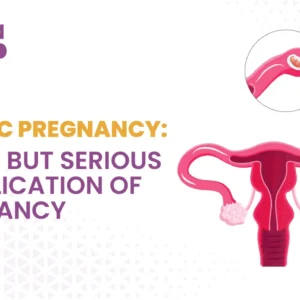Introduction
Expecting a baby and how to determine If your baby Is a Boy or Girl is a thrilling journey filled with anticipation and excitement. Among the many wonders of pregnancy, one of the most common questions parents-to-be have is: “Is it a boy or a girl?” Thanks to modern medical advancements, there are several reliable methods to determine your baby’s sex before birth. Let’s explore these options and understand how they work.
Medical Methods to Determine Baby’s Sex
Ultrasound method
How It Works: An ultrasound uses sound waves to create an image of your baby. Around the mid-point of your pregnancy, the baby’s genitalia are usually developed enough to be visible on an ultrasound scan. During this time, the sonographer can often determine the sex of your baby by examining the images.
When Can You Find Out the Sex?
The most common time to determine the baby’s sex via ultrasound is during the mid-pregnancy scan, typically performed between 18 and 22 weeks. At this stage, the baby’s genitalia are usually developed enough to be visible on the ultrasound.
How Ultrasounds Determine the Baby’s Sex
During the ultrasound, the technician (sonographer) will look for specific markers that indicate whether the baby is a boy (XY) or a girl (XX). Here are the key indicators:
For a Boy (XY):
- Presence of a Penis and Scrotum: The sonographer will look for the presence of a penis and scrotum. These structures can be identified through specific angles and positions during the scan. The penis might appear as a protrusion between the legs, and the scrotum may look like a small sac under the penis.
- Sagittal Sign: This sign involves viewing the genital area in a longitudinal section. A protruding nub pointing upwards at an angle greater than 30 degrees relative to the spine is typically indicative of a boy.
For a Girl (XX):
- Presence of Labia: The sonographer will look for the labia, which may appear as three lines or a “hamburger” sign (two outer lines representing the labia and a central line representing the clitoris). The absence of a protruding structure between the legs is also a significant indicator.
- Sagittal Sign: In this view, if the nub is pointing straight out or downward and parallel to the spine, it’s typically indicative of a girl.
Factors That Affect the Accuracy of baby gender
Several factors can influence the ability to accurately determine the baby’s sex via ultrasound:
- Baby’s Position: If the baby is in a position that obscures the genital area, it can be difficult to determine the sex. Babies might be facing away, have their legs crossed, or be in a position that hides the relevant anatomy.
- Gestational Age: The clarity of the image improves as the baby develops. Earlier scans might not provide as clear a view of the genitalia.
- Maternal Factors: The amount of amniotic fluid, the mother’s body type, and the thickness of the abdominal wall can impact the visibility of the ultrasound images.
Tips for a Successful Gender Determination Scan
- Hydrate Well: Drinking plenty of water in the days leading up to the ultrasound can improve image quality by providing a clearer view.
- Timing Matters: Schedule the ultrasound for the recommended 18-22 weeks period for the best chance of determining the sex.
- Be Prepared for Movement: Babies can be quite active during the scan, so be patient as the sonographer tries to get the best angle.
What If the Sex Can’t Be Determined?
Sometimes, despite the best efforts, the baby’s sex may remain unclear due to positioning or other factors. In such cases, you might be offered another scan at a later date, or you could consider alternative methods like Non-Invasive Prenatal Testing (NIPT) for confirmation.
Non-Invasive Prenatal Testing (NIPT) method
When: Can be done as early as 10 weeks into pregnancy.
How It Works: NIPT is a blood test that analyzes small fragments of fetal DNA circulating in the mother’s blood. This test can detect the presence of the Y chromosome, which indicates a male baby. NIPT is highly accurate and is primarily used to screen for genetic conditions, but it also reveals the baby’s sex.
Amniocentesis method
When: Usually performed between 15 and 20 weeks of pregnancy.
How It Works: This procedure involves taking a small sample of the amniotic fluid surrounding the baby in the womb. The fluid contains fetal cells that can be analyzed for genetic information, including the sex chromosomes. While amniocentesis is highly accurate, it is typically done for medical reasons, such as detecting chromosomal abnormalities.
Chorionic Villus Sampling (CVS) method
When: Typically done between 10 and 13 weeks of pregnancy.
How It Works: CVS involves taking a sample of chorionic villi from the placenta. These cells contain the same genetic material as the baby and can be tested for chromosomal abnormalities and the baby’s sex. Like amniocentesis, CVS is usually performed for genetic testing.
Gender Prediction Kits
These over-the-counter kits claim to determine your baby’s sex using a urine sample. However, the reliability and accuracy of these kits are not scientifically validated. They might be entertaining to use, but they should not be relied upon for accurate results.
Conclusion
The most reliable methods to determine your baby’s sex are medical procedures like ultrasound, NIPT, amniocentesis, and CVS. These techniques are performed by healthcare professionals and offer high accuracy. While non-medical methods such as old wives’ tales and gender prediction kits can be fun, they are not scientifically proven and should not be relied upon for determining your baby’s sex.
Always consult with your healthcare provider to choose the best method for you and ensure a healthy pregnancy. Whether you’re hoping for a boy or a girl, the most important thing is the health and well-being of your little one. Enjoy this incredible journey and cherish every moment of anticipation!






